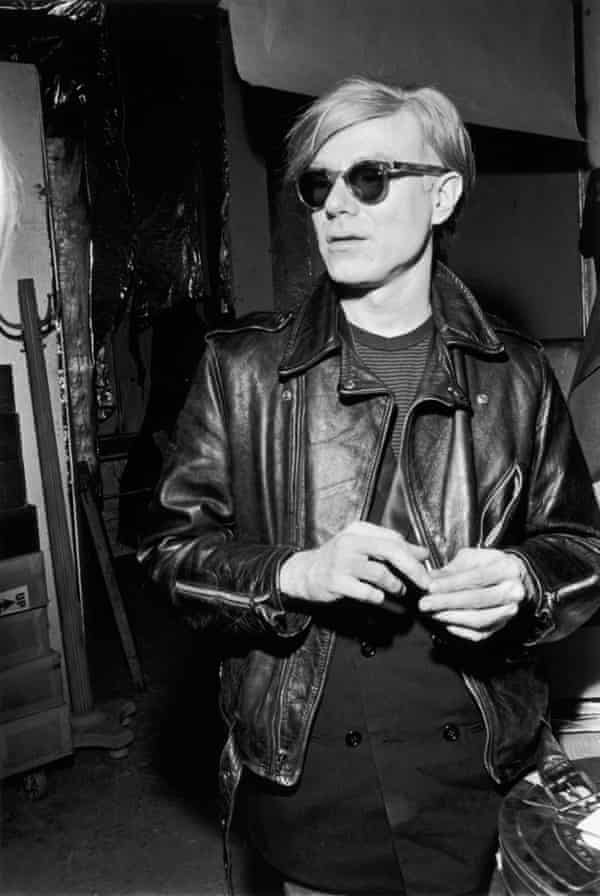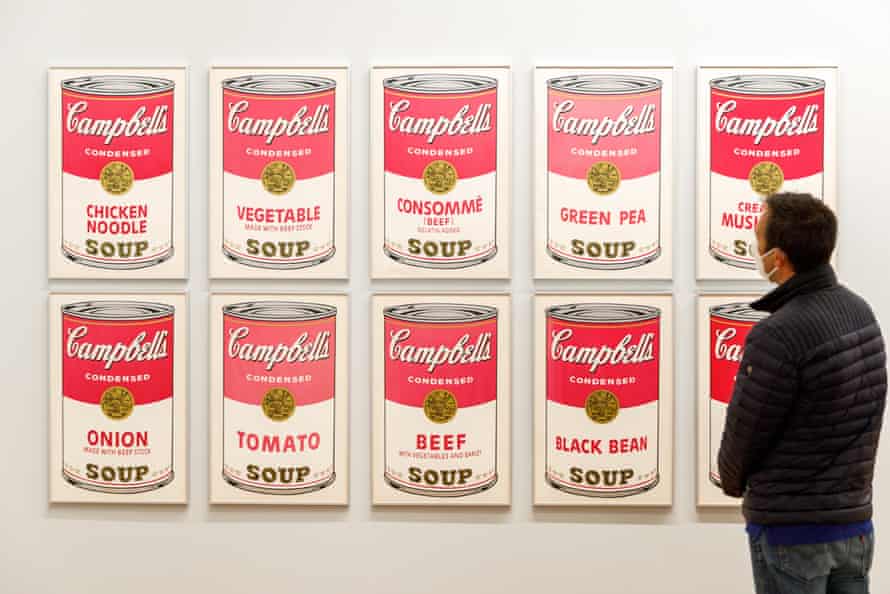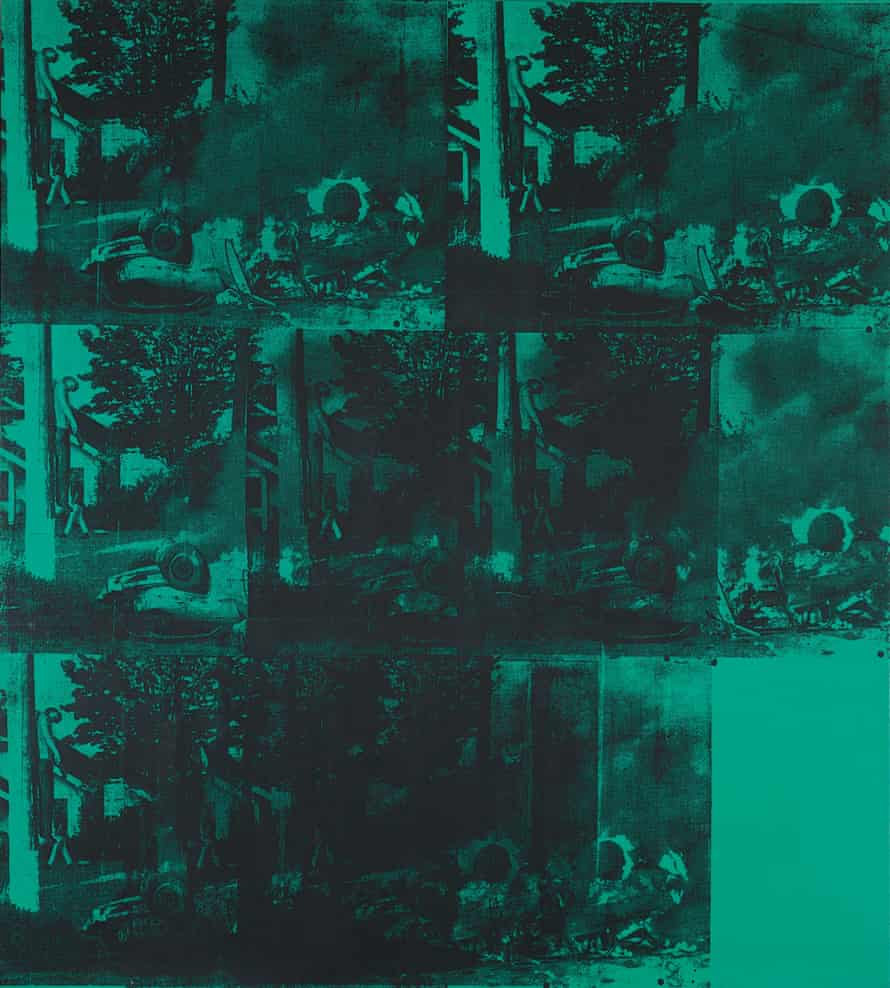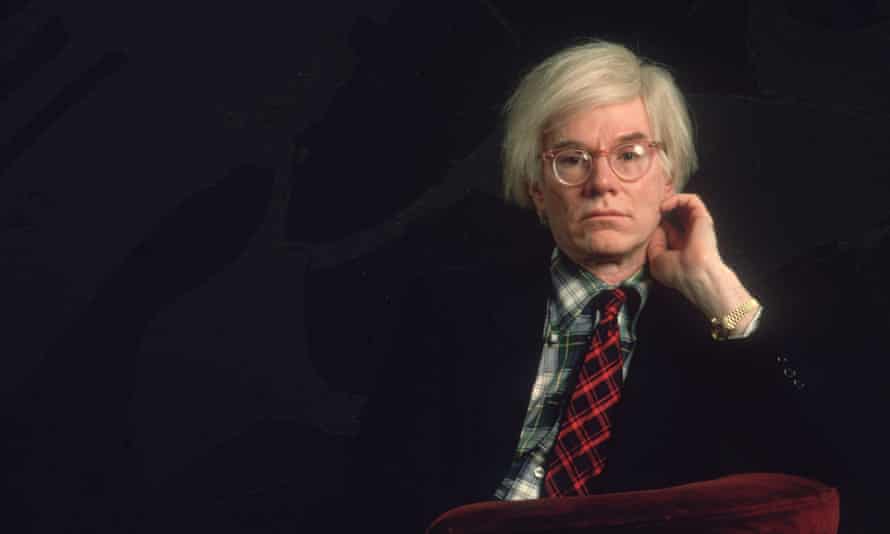
Yours for $200m: why Warhol is now worth more than Picasso | Andy Warhol
Andy Warhol: obsessively commercial pop artist, the patron saint of reality television, Facebook, Instagram, selfies, TikTok and every other imaginable fulfilment of his prophecy that in the future everyone will be famous for 15 minutes. Or so it might appear. But that is not the real him. Warhol was a seer whose surfaces conceal mysterious waters. “What people think is Andy Warhol isn’t Andy Warhol,” says Tracey Emin.
Try an experiment to understand this. Start recording video and sit in front of the camera for three minutes. You are not to speak. You are not to leave your seat. Just look into the camera. “Be yourself.” But who is that?
This is what Warhol subjected people to in his Screen Tests, filmed at his New York studio the Factory in the 1960s. His subjects look dazed by an unblinking scrutiny. They can’t win. Whatever they do, the unmoving, unstopping film camera records it as the truth of who they are. Bob Dylan squirms and grimaces, openly contemptuous of the exercise – for which it’s said he grabbed one of Warhol’s Elvis paintings as “payment” – yet that becomes his portrait, and it is painfully callow. A young Lou Reed is soft and vulnerable, but in a later appearance he has learned the game, or thinks he has, and tries to stonewall the camera by keeping his black shades on while drinking a bottle of Coke in a sarcastic dig at Warhol’s pop art. Again, it’s a perfect portrait of who he was at that moment. So if social media were really like Warhol’s Screen Tests, we would be constantly facing our sins in a confessional. We would live in truth.

A more famous Warhol portrait will go on auction at Christie’s in New York in May: his Marilyn, the most iconic face of pop art. Warhol first created it in 1962, the year Monroe took her life, by cropping a publicity still from her early film Niagara to focus solely on her face, then getting a silkscreen mesh made so he could print it on canvas as many times as he liked, adding hand-painted colours. It’s probably his most recognised work, “one of the rarest and most transcendent images in existence”, if you believe the Christie’s blurb, which compares it to the Mona Lisa and Botticelli’s Venus. If Christie’s has got its estimate right, his 1964 painting Shot Sage Blue Marilyn will sell for about $200m (£150m). That will make it the most expensive 20th-century work of art ever auctioned. The current record is held by Picasso. So Andy will be established as bigger than Pablo and therefore the greatest artist of the modern age – at least according to an equation of artistic and monetary value he himself invented.
In 1962 Warhol started to literally print dollar bills. He churned out multiple images of the almighty dollar, not as forgeries but works of art. Money is beautiful, these early works of pop art whisper. Later he would get philosophical on the subject. “Being good in business is the most fascinating kind of art. Making money is art and working is art and good business is the best art.”
But what is it that makes Shot Sage Blue Marilyn so apparently valuable? In 1964 a visitor to Warhol’s studio named Dorothy Podber created her own moment of performance art by pulling a gun and shooting a newly silkscreened Marilyn in the forehead. The shot went through the stack of canvases behind it; the one on sale still bears the poorly concealed scar. That frisson of violence and chaos adds to the sales pitch. But it’s all just the market’s way of catching up with the outrageous and unlikely fact that Andy Warhol is the greatest and most profound artist to have worked anywhere since 1945.
Warhol’s portrait of Marilyn seems to sum up so much about him. He made the word “superstar” famous, applying it to anyone who took his eye and could hold their own in the amphetamine-fuelled, sarcastic atmosphere of the Factory. His studio and hangout with silver foil walls came to define 60s Manhattan and regularly gets recreated in films as a plastic fantastic party venue. Warhol mixed adoration of “real” stars such as Monroe, Elizabeth Taylor and Elvis with a levelling belief that anyone can be a celebrity, at least for a moment. There’s a story that Judy Garland attended a party at the Factory only to be studiously ignored. Warhol made himself a celebrity, too, paving the way for today’s artists with his conscious exploitation of the media in everything from chatshow and soap appearances – albeit monosyllabic ones – to a burger ad that has become a posthumous viral hit. His 70s Polaroid portraits even made the rich and famous pay to become Warhol subjects. He fabricated his own image as an enigmatic svengali figure, portraying himself in half shadow, in shades, in drag.

There’s a better Warhol just behind the one we think we know. His greatest version of Monroe is not Shot Sage Blue Marilyn. It is Tate Modern’s 1962 Marilyn Diptych, painted just after her death, which repeats her face in bright colours on one canvas while on the other she fades to grey in a haunting film strip of memory failing, fame decaying, time running out. The inner Andy has taken over, and he has more on his mind than fame or money.
Emin admits it was only fairly recently that she saw Warhol’s true nature. Like any future artist and David Bowie fan growing up in 70s Margate, she was fascinated by him. “When I was at school I used to imagine that I would go to New York by boat and when I walked down the gangplank Andy Warhol would be there waiting for me.” But later, as a young artist, she would ask herself: “Who would you rather be – Andy Warhol or Joseph Beuys?” In those days Beuys appeared the true visionary to her, the shaman. He was a rear gunner in a Stuka dive bomber in the second world war who got shot down over the Crimea and saved – as he told it – by Tatar shamans who covered his burns with felt and fat. These substances became his ritual materials. Warhol, by contrast, was born in Pittsburgh in 1928, became a successful advertising artist drawing shoes in 50s Manhattan, then turned to fine art at the beginning of the 60s when contemporaries such as Jasper Johns, Robert Rauschenberg and Roy Lichtenstein were proving art could be made out of the stuff of everyday life and pop culture. “Warhol always looks external, but he was the real shaman,” Emin thinks now.
A shaman can shapeshift and enter other worlds to communicate with spirits and the dead. Take a look at Warhol’s 1963 painting Five Deaths on Orange. In the shocking news image that Warhol has silkscreened in black on an abstract plane of fiery colour, a young man and woman are crawling out of an upside down car. They look back into the twisted metal cage they have escaped, where a woman lies among dead bodies, her eyes blankly staring at yours. Is she dead, near death, dazed? She seems to have seen things the living don’t see. The two survivors look as if they are peering across a mortal threshold, while her eyes meet ours from the far side.

If I was going to fork out $200m for a Warhol it would be one of the Death and Disaster series to which this belongs. In fact the current record price for one of his works is held by Silver Car Crash (Double Disaster), which sold for $105m in 2013.
The Warhol we think we know didn’t last long. In 1962, he put on a sensational show of carefully painted Campbell’s soup cans at the Ferus Gallery, Los Angeles. The same year he started silkscreening Marilyn’s face. But by 1963 he and his assistant Gerard Malanga were ransacking tabloid news photos, some of which went back to the 1940s, of car crashes and suicides, and silkscreening these as black stains in fields of purple, red, green, silver. That same year John F Kennedy was shot dead and Warhol portrayed Jackie Kennedy at his funeral, her veiled face wounded by the nation’s disaster.
In Green Car Crash he repeats over and over, as if he can’t quite believe it, an image in which a man has been thrown out of a car and impaled on a tree. The car burns below his suspended corpse. A witness walks nonchalantly by, apparently unconcerned by this scene of extreme suffering.
That indifferent onlooker is exactly what many assume Warhol to have been himself: an unmoved spectator who celebrated not caring, the silver-wigged voyeur numbly pointing a camera. His harshest critic, Robert Hughes, called it “diligent and frigid” in an essay dismissing Warhol as one of the “affectless heroes” of the media age. But in Green Car Crash it is Warhol who portrays, and criticises, such emotionless looking; the man who walks on by is even scarier than the burning car. What the passerby ignores, what we modern secular people are schooled to ignore, is the miracle, the sign, amid the horror. For the man hanging from the tree has been turned into an image of Christ, his body fixed up there for all to see.
John Richardson, Picasso’s biographer and a friend of Warhol, revealed in a speech at the artist’s memorial service in 1987 that Warhol attended church regularly all his life and served secretly in soup kitchens. The world has had more than three decades to assimilate this information of Warhol’s religiosity, yet for many it is a bitter wafer. His latest biographer, Blake Gopnik, tries to dismiss the idea of Warhol as a Catholic artist. “Warhol certainly lived a less holy life, made more profane art and committed more mortal sins than should have been on the conscience of any devout Catholic, as defined by his era.” But since when were Catholic artists pure? From Caravaggio, to the novels of Evelyn Waugh and Graham Greene, the most powerful religious art is often driven by a sense of damnation. “Warhol was so spiritual about everything,” says Emin.
You can go from seeing nothing but materialism in Warhol’s art to seeing the spirit everywhere. Soup cans? The sacrament. Marilyn’s mysterious face? A Byzantine icon; Warhol’s parents were from what is now eastern Slovakia and he was brought up in the Byzantine Catholic faith. And in the Marilyn diptych he explicitly uses the tradition of the medieval Christian altarpiece to depict Monroe as a modern martyr.

If that all seems excessive, Warhol managed to leave a very clear final testament confirming his worldview: an epic series of paintings of The Last Supper, silkscreened from a cheap repro of Leonardo da Vinci’s masterpiece, in 1986, the year before he died. His life had been shadowed by frailty ever since he was shot, in 1968, by Valerie Solanas. He showed his wounded torso to be photographed by Richard Avedon and painted by Alice Neel, offering the image of himself as tortured saint, flagellated Christ.
Emin, who is the same age now that Warhol was when he died, and who recently survived cancer after life-changing surgery, is particularly fascinated by the late Warhol. “I really respect what Andy Warhol did after he was shot. He said all the tax has got to be paid, we’re cleaning up … He just grew up. He got rid of the Factory and got an office and everybody wore suits and ties. He realised all he could really give was to be an artist.”
In The Last Supper it is that moment we see. It is his own valedictory feast. For me, the disciples at the table are people from the Factory: Candy Darling, Edie Sedgwick, Billy Name, Ondine.
The Factory was not just a party scene. It was Warhol’s most risky venture into the extremes of sin and salvation, a theatre of human possibility and suffering in which the actors didn’t go off stage after two hours but played out their parts to the sometimes awful end. To just see it as the beginning of multimedia art and the death of painting doesn’t quite capture the strange authority of this artist and the milieu he wove around him. When Warhol moved out of fine art it was to let in the life of the streets, where the choices you make are moral, not just aesthetic. “Andy Warhol made the real more real,” says Emin.
He could do a very good impression of someone who didn’t give a damn. “Do you think when Edie jumps she’ll let us film it?” he is reputed to have said, apparently hoping Sedgwick would attempt suicide on camera. Yet he too was a character in this morality play, or Catholic novel. Is Warhol the devil leading sinners on an amphetamine-strewn path to hell, the bad Samaritan who does nothing – or rather, the recording angel who sees all?
In his Screen Tests the camera is the eye of God. Nothing gets past it.

If this all makes Warhol sound a bit romantic, that is exactly what he was. He is one of the few artists in recent times who lived up to the 19th-century cult of the artist as someone other, bohemian, able to see what others don’t. Adopting a distant mysterious persona, surrounding himself with people living on the edge, he took Romanticism into a new realm of modernity. He licensed such inspired chaos it got him shot.
So it’s not surprising that this artist so full of mystery and surprise is poised to outsell Picasso and become, by commercial acclaim, the god of modern art. But could we end up killing the thing we love? There’s an edge to Warhol that doesn’t let him slide smoothly into the mainstream. Constant subversion of the pop culture he seems to crave is what makes him so enduring. Christie’s sale of one of his less emotional Marilyns celebrates a middlebrow saint, but he’s not that. “Andy Warhol was not a popular artist,” Emin points out. “He was always alternative: alternative to everything that was going.”
